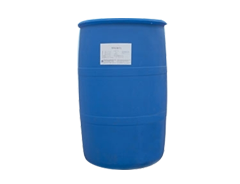When the emulsion is used, water is added to form a white emulsion, and the pesticide particles are generally several to dozens μ m。 Its efficacy is better than that of solid preparations, but it is also prone to drug damage. At present, emulsion is the most widely used dosage form in liquid preparations. In order to reduce environmental pollution and improve safety, people have recently developed to the dosage form of organic solvent-free, microemulsion and suspension.

Due to the characteristics of its chemical structure, surfactants have two basic properties of adsorption and combination, which show the functions of dispersion, emulsification, solubility, foaming, lubrication, wetting, washing, catalyst and so on. Due to the various functions of surfactants, they are widely used in various fields. These fields include fiber processing, cosmetics, pharmaceuticals, rubber, plastics, pesticides, chemical fertilizers, etc. The following describes the action characteristics of surfactants (including some additives) in pesticides and their functions in plants.
Generally, the granules are technical drugs containing 0.1% ~ 10% pesticide and 95% with particle size of 300 ~ 1700 μ M, which can be used for spraying in paddy and dry fields. The preparation methods mainly include extrusion granulation, impregnation and coating. The selection of methods depends on the raw materials. It is usually composed of carrier, disintegrating agent, granule, etc. As dispersant and disintegrating agent, it is generally combined with several percent of anionic surfactant. In the extrusion granulation method, as disintegrating agent, there are anionic surfactants such as lignin sulfonate and naphthalene sulfonic acid acetal. In addition, in order to prevent wear during processing, about 1% of anionic sodium lauryl sulfate or dioctyl sulfonate should be added. Due to the problem of powder dispersion, it is now developing into granules. At the same time, in order to save labor, it also speeds up the development to 3kg preparation.
Wettable powder generally contains 5% ~ 80% of the original drug, and is composed of wetting agent, dispersant, carrier and others (Table 5). 95% of the system has a particle size of 65 μ M or less, which is prepared by mixing and crushing each component. Among them, various surfactants are selected for wetting agent and dispersant, and the component is no more than 10%, usually 5%. The types of surfactants used are nonionic and anionic wetting agents, while anionic dispersants. The carriers used include clay, talc powder, diatomite, calcium carbonate and other mineral powders. Wetting agent and dispersant make the pesticide technical agent and carrier wet first, and then form and maintain a stable dispersion system.